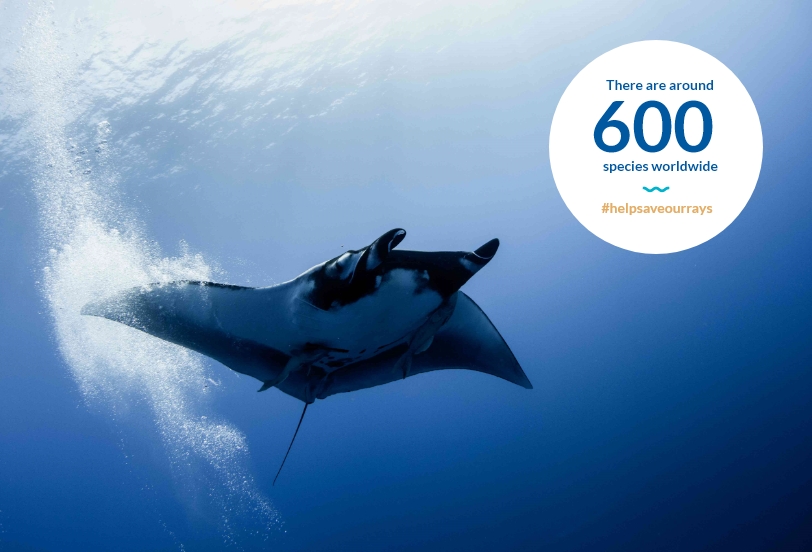They are also found at all depths, from the intertidal zone down to the deep sea. While most rays live in the sea, a few also live in fresh water; some up to thousands of kilometers inland in South America. Their wide distribution and diversity means that rays have an important role in almost all marine ecosystems, with each species having its own distinctive niche. Almost all rays feed on prey living close to, on, or just underneath the bottom. They act somewhat like the vacuum cleaners of the ocean. This means that the animals that feed on them live on the bottom as well. Rays feed mainly on invertebrates and small vertebrates, with prey ranging from quite large fish down to tiny crustaceans. All known rays are carnivorous, and as a group they are high in the food web.

Rays are a common catch within many fisheries, both inshore and offshore. Although rays are targeted in fisheries elsewhere in the world, they are largely caught accidentally, as a bycatch of commercial and recreational fisheries targeting other species. Most fishing pressure occurs in waters over the continental shelves, putting the species living in this area at risk. Deep-sea rays are even more at risk to fishing pressures than coastal and pelagic species, as the low productivity of the deep-sea floor means that many of the species found there grow extremely slowly and have a low reproductive rate.
All proceeds fund marine conservation projects. Shop T-Shirts
Shop T-Shirts
Many species are found in only a small area, while others may live only in specific habitats over a wider area. Fisheries in the deep-sea are still being commercially developed, and rays will increasingly be caught as bycatch in these areas. Unfortunately, the low reproductive rate of these rays means that species can be heavily reduced, even to extinction, before the targeted bony fish species shows a significant decline in catch.
Habitat modification and pollution are also major issues for some inshore species. Estuarine and coastal areas are suffering increasing alteration through development, restriction of river flows, land reclamation and other pressures. The young of many inshore species spend their first few months or years in high productivity ‘nursery’ areas. Often these nursery areas are located in estuaries or shallow mangrove-fringed ecosystems where there is plenty of food and protection from larger predators. The destruction of these nursery areas can result in a permanent reduction in the local ray population.
Rays are present in most marine ecosystems worldwide, and have a vital role in maintaining the health and function of these ecosystems. Their ecological niche has been little-studied when compared to sharks, but their diversity, abundance and worldwide distribution are evidence of their success. The challenge for marine science now is to ensure these rays are protected, so they do not quietly disappear before we can fully understand just how important they are.





Rays are present in most marine ecosystems worldwide, and have a vital role in maintaining the health and function of these ecosystems. Their ecological niche has been little-studied when compared to sharks, but their diversity, abundance andworldwide distribution are evidence of their success.There are approximately 630 different species of rays and skates that are divided into 18 families when scientifically classified. Because rays and sharks are closely related, they are often studied together. In 2010 a global IUCN study of vertebrates found that of 1,044 cartilaginous (ray and shark) species examined, 345 or 33% were threatened with extinction.
CO-EXIST PURCHASES CONTRIBUTE TO PROTECTING THE WORLDS RAY POPULATION!
Show your support and awareness. Help to preserve and protect our world's oceans.